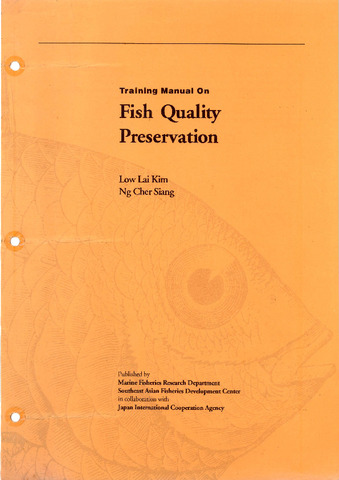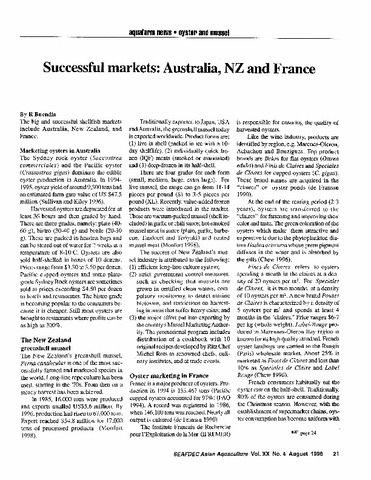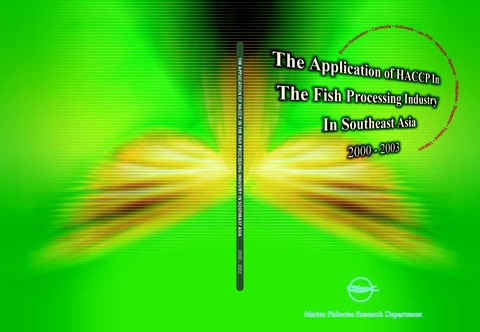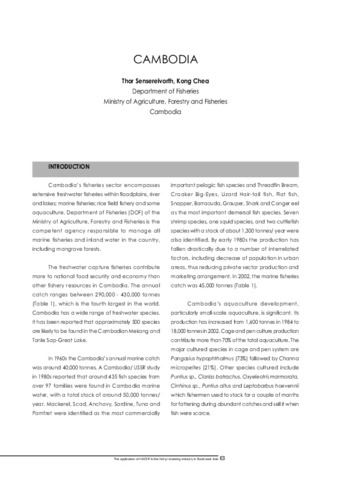| dc.contributor.author | Low, Lai Kim | |
| dc.contributor.author | Ng, Cher Siang | |
| dc.date.accessioned | 2021-04-15T03:53:50Z | |
| dc.date.available | 2021-04-15T03:53:50Z | |
| dc.date.issued | 1992 | |
| dc.identifier.citation | Low, L. K., & Ng, C. S. (1992). Training manual on fish quality preservation. Singapore: Marine Fisheries Research Dept., Southeast Asian Fisheries Development Center in collaboration with Japan International Cooperation Agency. | en |
| dc.identifier.isbn | 9971883058 | |
| dc.identifier.uri | http://hdl.handle.net/20.500.12066/6646 | |
| dc.description | The use of fish begins from the time the fish is harvested, moves through an often long distribution chain, before it is finally presented to the consumer for his eating pleasure. Along the way, some forms of handling and processing is essential in preserving the quality of the fish.
The quality preservation of fish also serves to ensure that its commercial value is not lost, and therefore is a key factor in making fish an internationally traded commodity.
Ultimately, fish is consumed by man for his well being and pleasure. It is this factor that dictates the true value of the fish. Hence, all the objectives of quality preservation and its practice throughout the industry should be geared towards this goal.
This manual represents a continuing effort by the Marine Fisheries Research Department to provide useful guides for technical personnel. The manual was prepared as a teaching tool for educators and trainers who need to conduct courses in fish quality preservation, primarily to fish retailers and seafood handlers.
The subject coverage in this manual is broad, touching on many concepts that have a bearing on fish quality preservation. On the other hand, the language used is deliberately kept as non-technical as possible, so that the manual user can effectively relate with his students.
The manual is divided into 2 Modules. Module I introduces the idea of Total Fish Quality. It covers the fundamental concepts of what constitutes fish quality, the changes occurring during fish spoilage and the value of fish as food. Module II introduces the two major forms of fish quality preservation, namely icing and freezing, identifies the role of hygiene and sanitation practices in fish quality preservation, and the practical requirements for quality preservation at retail outlets. The Module Objective, Lesson Objectives, and time allocations for each lesson and practical session are listed to aid the trainers in their programme planning. Trainee’s notes and visual aids are provided in Annex 1 and Annex 2 respectively. | en |
| dc.format.extent | vi, 271 pages : illustrations ; 32 cm | en |
| dc.language.iso | en | en |
| dc.publisher | Marine Fisheries Research Department, Southeast Asian Fisheries Development Center | en |
| dc.subject | Preservation | en |
| dc.subject | Freshness | en |
| dc.subject | Rigor mortis | en |
| dc.title | Training manual on fish quality preservation | en |
| dc.type | Book | en |
| dc.subject.asfa | fish | en |
| dc.subject.asfa | processing fishery products | en |
| dc.subject.asfa | Fixation | en |
| dc.subject.asfa | quality | en |
| dc.subject.asfa | quality control | en |
| dc.subject.asfa | icing | en |
| dc.subject.asfa | freezing | en |
| dc.subject.asfa | hygiene | en |
| dc.subject.asfa | autolysis | en |
| dc.subject.asfa | nutritive value | en |
| dc.subject.asfa | food composition | en |
| dc.subject.asfa | cold storage | en |




